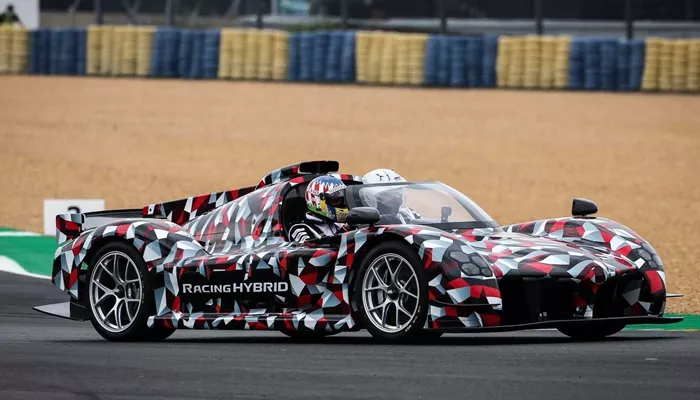In 1984, Toyota’s 370-hp Group B Celica Twin-Cam Turbo made its mark in the World Rally Championship (WRC). Despite its power, the rear-wheel-drive Celica was up against formidable competitors like Audi’s revolutionary 4WD Quattro and Lancia’s dominant 037. The 1984 WRC season was largely controlled by Audi and Lancia, with both factory teams claiming most of the victories. However, Toyota’s Celica did win the grueling Safari Rally in Kenya, the most challenging event of the season. Peugeot’s 205 Turbo 16 also started to make waves towards the end of the year, hinting at a shift toward 4WD and higher horsepower in the WRC.
Recognizing the changing landscape, Toyota began development of a new 4WD car designed to compete in the upcoming Group S class, which would replace Group B in 1987. This car, the Toyota 222D, was slated to be a 600-hp powerhouse. However, in 1986, two fatal accidents in Group B events halted the project. The FIA, the sport’s governing body, cancelled both Group B and its successor, Group S, just as the 222D was nearing completion. Only two prototypes of the car were ever built, and its potential was never fully realized.
The rise of 4WD cars in the mid-1980s saw manufacturers like Audi, Lancia, and Peugeot dominate the WRC. By 1985, the competition featured cars with over 500 hp, like the Audi Quattro and the Lancia Delta S4, while Toyota’s Celica, still using rear-wheel drive, was left behind with only 370 hp. Despite this, Toyota’s Celica managed to win the Safari Rally, showing that reliability was just as important as speed in certain rallies.
Toyota wasn’t content with just one victory. It aimed to dominate the WRC with its new 4WD contender, the 222D, which would compete with Audi’s Sport Quattro RS 02 and other powerful cars in 1987. This was a clear strategy: win on Sunday, sell on Monday. Rallying had massive fan support, and Toyota wanted to harness that excitement to boost its sales.
But 1986 brought tragic events that would alter the course of WRC history. In May of that year, Lancia driver Henri Toivonen, leading the Tour de Corse rally in Corsica, lost control of his Delta S4. The car crashed into a ravine, catching fire and killing both Toivonen and his co-driver. Later that year, another tragedy occurred at the Rally of Portugal. Ford RS200 driver Joaquim Santos lost control of his car after trying to avoid a spectator, leading to a crash that killed three spectators and injured many more. These accidents underscored the dangers of the powerful Group B cars, leading the FIA to take action.
In the wake of these tragedies, the FIA cancelled both Group B and the proposed Group S class, even though manufacturers had already invested heavily in new cars for the new category. Toyota’s 222D was one of the most affected projects. The car was designed from the ground up to be a competitor in the new Group S class, with a 2.0-liter turbocharged engine producing 600 hp. The car’s design was unique, featuring a space-frame chassis and a sophisticated 4WD system with a torque-splitting mechanism, allowing the driver to switch between two-wheel drive and four-wheel drive.
By the time of the FIA’s decision, Toyota had already completed several prototypes, and the car was nearing its final stages of development. Unfortunately, the cancellation of Group S meant that Toyota’s efforts were in vain. The FIA replaced Group B and Group S with Group A, which focused on production-based 4WD cars, effectively ending Toyota’s plans for the 222D.
Today, only a few Toyota 222D prototypes remain. One is displayed at the Toyota Mega Web showroom in Tokyo, while another is housed at Toyota Motorsport’s headquarters in Cologne, Germany. The third, set up for tarmac use, belongs to a former engineer from Toyota Motorsport, who purchased it after the company’s Formula One division closed in 2010.
Despite the limited number of prototypes, the Toyota 222D remains a symbol of what could have been. It could have been the ultimate Toyota sports car, a 600-hp machine inspired by the MR2, combining cutting-edge technology and stunning performance. Instead, it stands as a reminder of a lost opportunity in the world of rally racing.

